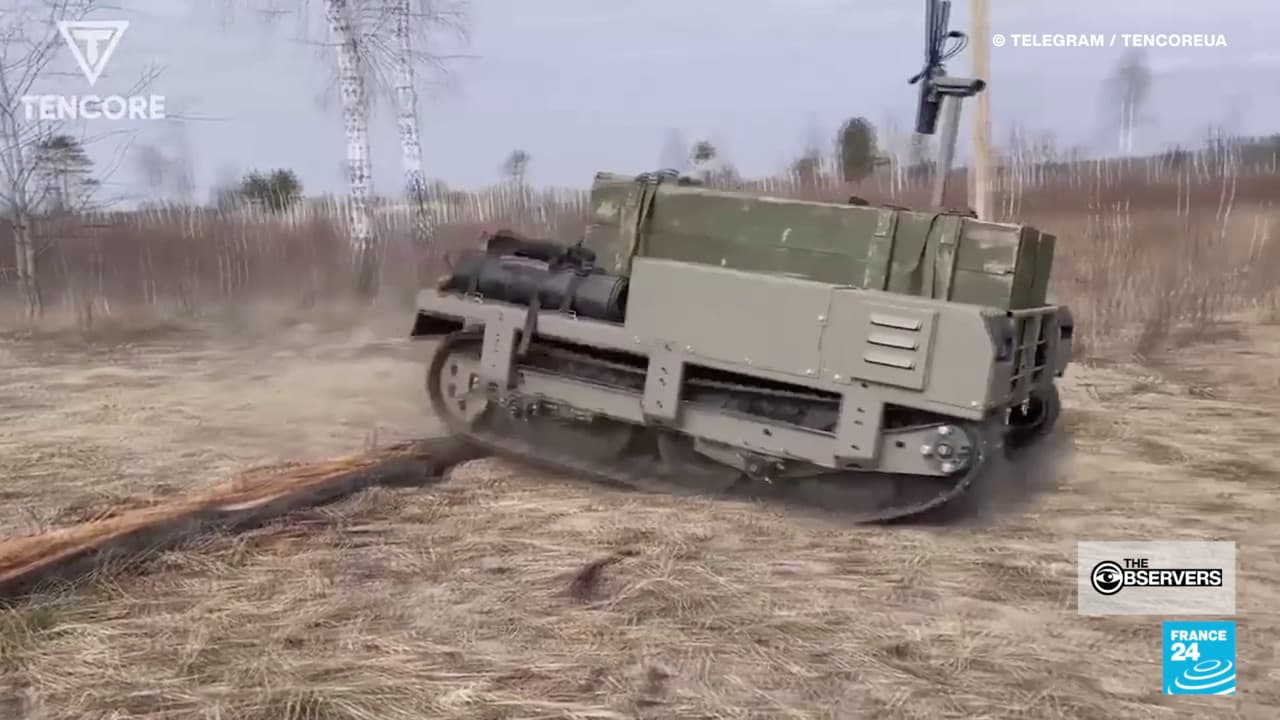For Ukrainian soldiers, movement around the front line is becoming ever more perilous. The primary threat comes from aerial drones, which Moscow is using with increasing intensity. To try and limit troop movement at the front, companies have developed terrestrial drones – remote-controlled vehicles capable of undertaking logistical missions. These include delivering vital supplies, such as food and ammunition, or evacuating the wounded from the front line to the rear. They are more expensive and rarer than their airborne equivalents, but their use is constantly increasing.
Kate Bondar, a researcher at the Center for Strategic and International Studies, told the FRANCE 24 Observers team:
“The most common mission for ground vehicles is logistics. From my conversations with the Ukrainian military, it’s from 60 to 70 percent [of missions]. For resupply, basically, you transport the ground drone as close as possible to the combat zone using a pickup truck. And once it's at the right distance, you let it reach the position of the soldiers who need resupplying.
High price, slow pace
The deployment of terrestrial drones in Ukraine was made possible largely through Starlink, SpaceX's satellite internet service. Starlink allows the devices to be controlled from up to 100 kilometres away.
But Bondar said these drones are not without their flaws:
“Most of these systems have batteries, and batteries emit heat, and that’s how they get detected."
Terrestrial drones are therefore a prime target for aerial drones, especially given their relatively slow speed. Another disadvantage is that they are expensive to manufacture, unlike aerial drones such as FPV (first-person view) drones, which are being used massively by Russia and Ukraine.
However, unlike aerial drones, their ground-based counterparts possess a greater resilience to jamming. Once jammed, an aerial drone will fall to the ground. In contrast, on the ground, if the link between the pilot and the ground drone is interrupted, the vehicle can simply wait before resuming its route once communication is restored.

